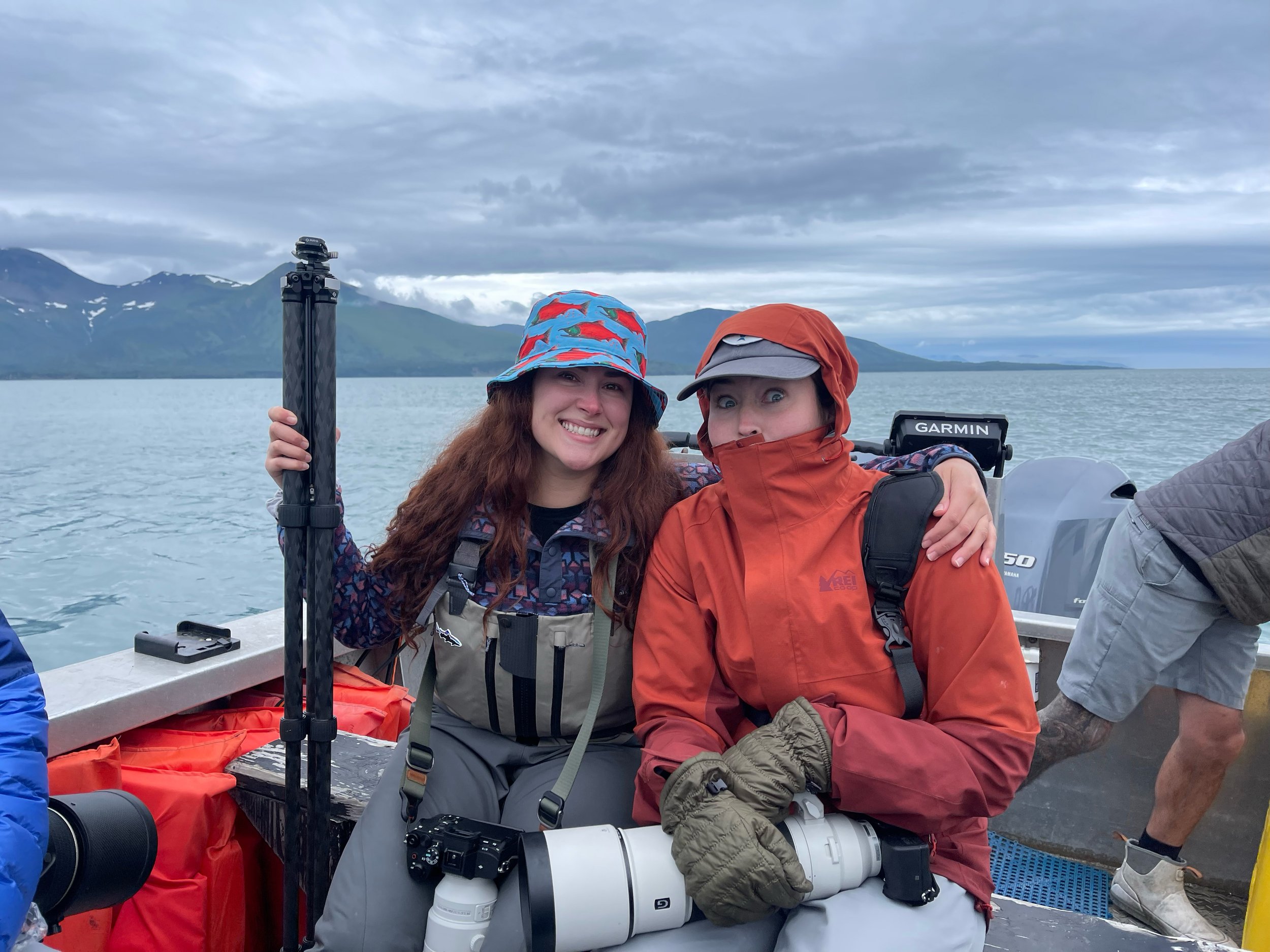
Field Notes
Are bears and moose friends?
Bear and Moose…. are friends?
Rarely are moose and bears interact with each other, they often occupy the same spaces but do not care for each other. This moose cow and young female bear, however; chased each other as the moose cow crossed into the inlet. Like a dance, one would chase the other until they both retreated into the dense Alaskan bush. When we first saw the moose enter the inlet, we weren’t sure what she would do and if you ask Lianna, she is more weary of Moose than bears because Moose have quicker tempers. She was inherently curious, as she would play with the bear, she would turn and look at us, taking a few steps forward. We made sure that we had an exit strategy in case she wanted to play with us too, the skiff running, engine ready!
Meet Split Ear
Meet Split Ear, a fisherwolf we encountered in 2019.
Katmai National Park is estimated to have at least six wolf packs that roam the area. Katmai’s coastlines span over 500 miles, and having six wolf packs roam the coasts is very high density compared to wolves in other areas. This means that wolves are presented with unique opportunities for hunting and sustaining themselves.
During our 2019 expedition, we encountered a lone female known as Split Ear. She was roaming the wash out of low tide where the brackish glacial water met the sea. Often, we see bears, eagles, seabirds, and wolves during low tide as they look for salmon carcasses, dig for clams, and other animals that wash up on the shore. She stopped at a channel where she would wait patiently, then run after a salmon to ground it against the shallow rocks. We watched her do this on multiple occasions, only eating the brain of the salmon, as it is her favorite and the most nutritious part of the fish. This was one of the most unique encounters we have seen with wolves in Katmai National Park. We have seen them clamming during full moon low tides on many occasions.
Wolves on the Alaskan coastline have expanded their diet to marine mammals and seafood. In my own experience, I have also seen wolves dig up clams and eat seaweed. Some have even been documented to hunt sea otters successfully. This behavior is fascinating to see, showing how pack dynamics of wolves come together and break, how solitary coastal wolves have developed different hunting strategies, the survval of lone wolves or wolves on the lower order of the pack, and what this means the Alaskan coastal food web. As wolves continue to grow in population and expand, large packs must break up to find food sources to feed all members. This means that knowing how to fish is a good skill to keep the pack healthy and well fed. Hunting Marine mammals requires different strategies than hunting deer, elk, goat and moose. It requires swimming and being able to drive marine animals to places where they are trapped. In addition, wolves that are lower in the pack order or pups have a lower survival rate in early fall and learning how to hunt for slamon and marine mammals can increase their survivorship, as salmon are packed with important fats and protein. Scientsits are currently trying to understand how these increased observations and changes in their diet impact the food web, from the recovering otter populations to the salmon run.
Our 2024 Recap
What a year it’s been
2024 was another successful year in Katmai National Park. This year, we had great luck seeing two sets of spring cubs in Hallo Bay. In recent years, male bears conflict infanticide, killing offspring, and females with spring cubs have been evading the grassy open plains. We saw nursing behavior and even served as a screen for one mother and two cubs. These tender close moments are some of our favorites, as we saw small glimpses into the lives of a mother bear and her cubs experiencing the world around them.
We saw a diverse array of wildlife, including harbor seals, otters, puffins, moose, eagles, oystercatchers, harlequin ducks, and many more. We followed wolf tracks on the beach, and otters swam alongside our skiff as we glided through the water from our ship to land.
In Geographic Bay, we saw the beginnings of the salmon run, with King Salmon fighting their way upstream. As we sat on our rock outcroppings, bears surrounded us, using their unique strategies to fish. Some “snorkel,” walking up and down the river with their faces in the water. Others lunge for salmon from the riverbanks or patiently wait for salmon to swim by, scooping them into their clutches.
This trip wouldn’t have been so amazing without the incredible group of people who came together to experience Alaska. We cannot thank our guests enough for sharing great laughs and unforgettable experiences.
Check out the video and photos below of some of our most favorite moments





























